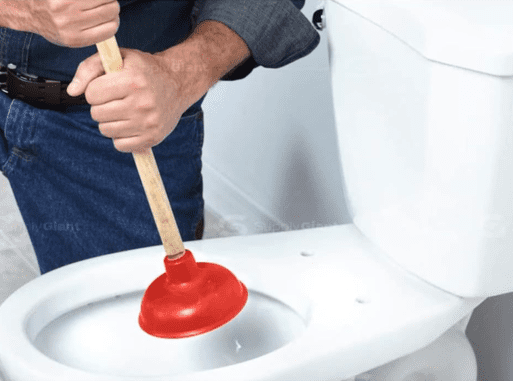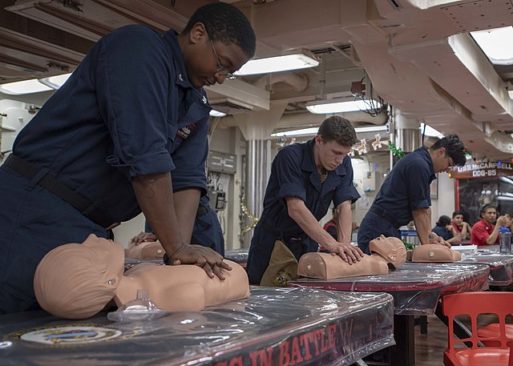 Even though cardiopulmonary resuscitation (CPR) is commonly shown in movies and on television as a semi-reliable lifesaving technique, its actual effectiveness has been bleak. According to an annual report by the Cardiac Arrest Registry to Enhance Survival, only 7 percent of people who receive CPR before going to the hospital check out of the hospital with full brain function.
Even though cardiopulmonary resuscitation (CPR) is commonly shown in movies and on television as a semi-reliable lifesaving technique, its actual effectiveness has been bleak. According to an annual report by the Cardiac Arrest Registry to Enhance Survival, only 7 percent of people who receive CPR before going to the hospital check out of the hospital with full brain function.
Medical professionals ultimately felt they could increase those odds. And they found inspiration in the most unlikely of places.

People practicing traditional CPR.
Credit: Wikimedia Commons
An Aha Moment…From a Toilet Plunger
In 1988, a 65-year-old man experienced a cardiac arrest, causing his heart to cease functioning. In the absence of CPR knowledge, his wife and son resorted to an unusual measure: employing a toilet plunger in a desperate attempt to restore his heartbeat until medical professionals arrived.
Following the man’s successful recovery at San Francisco General Hospital, his son shared a suggestion with the attending physicians: to have toilet plungers readily accessible beside every bed in the coronary unit.
According to the New York Times, the hospital did not implement this advice. But it did prompt the doctors to explore more effective approaches to CPR. Over three decades later, during a recent gathering of emergency medical services directors in Hollywood, Florida, researchers presented compelling data demonstrating that employing a plunger-like setup leads to significantly improved outcomes in resuscitating patients.
A New CPR Technique Is Born
Neuroprotective CPR is a new procedure that aims to minimize brain damage during cardiac arrest. There are several steps involved in this process.
The first step employs, you guessed it, a plunger. A silicone plunger is placed over the chest to pump blood in and out of the heart. A breathing tube is also placed in the mouth to control the pressure in the lungs. And finally, a body-positioning device is used to get the patient into a partial sitting position. This allows oxygen-deprived blood to leave the brain more quickly and be replaced by replenished blood.
Here’s a demonstration of a very similar new CPR technique utilizing the plunger and body-positioning:
According to the FDA, these methods can increase by 50% a patient’s one-year survival rate from cardiac arrest.
Dr. Joe Holley, medical director for the emergency medical service that serves Memphis and surrounding areas, says this method has been three times as effective as conventional CPR.

 A Groundbreaking New CPR Technique Inspired by Toilet Plungers
A Groundbreaking New CPR Technique Inspired by Toilet Plungers


 “Help Me, Helen”
“Help Me, Helen”

 “As Tears Go By” by Marianne Faithfull
“As Tears Go By” by Marianne Faithfull














